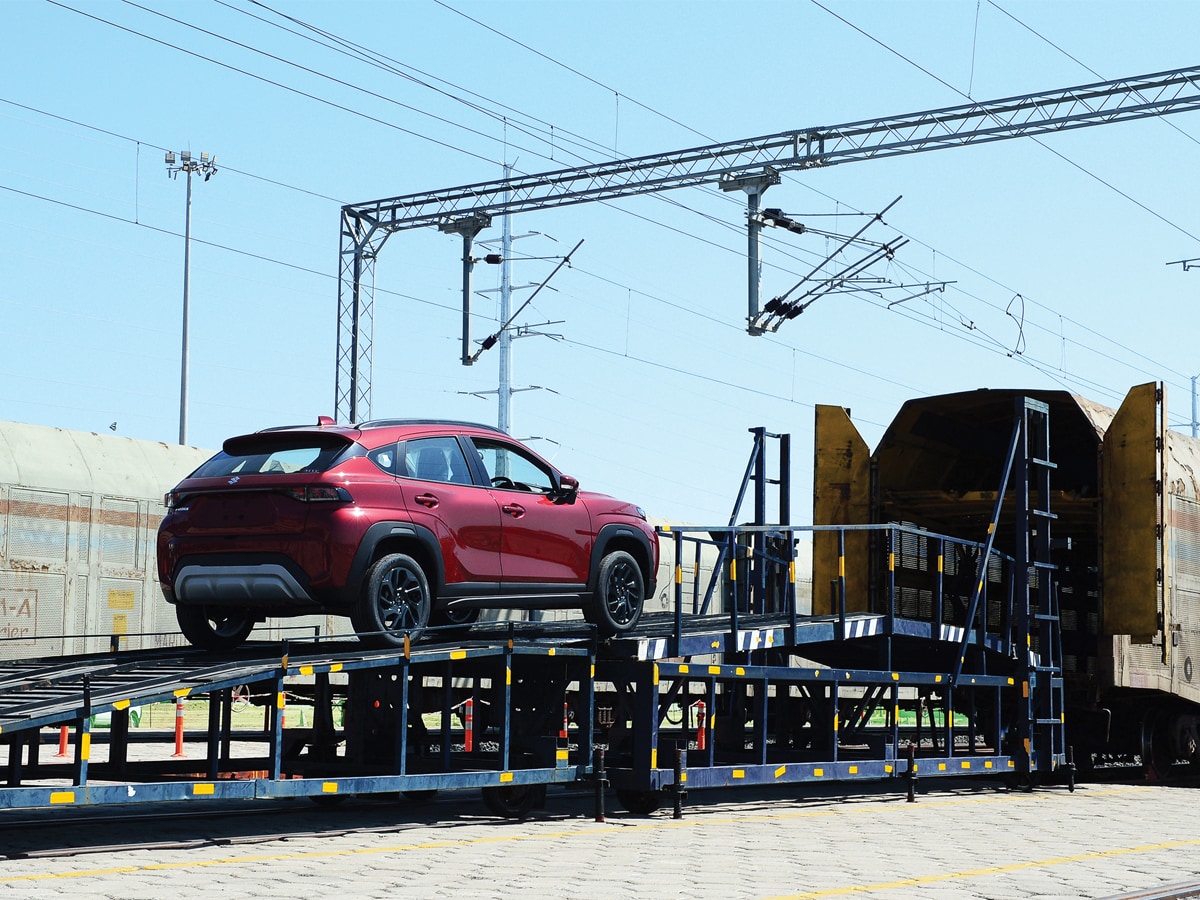Sales weren’t in high gear, with total domestic passenger vehicle sales between April and November growing marginally at 1 percent. Of this, car sales fell 12 percent during the period, while utility vehicle sales grew by 12.9 percent. SUVs account for more than 60 percent of the country’s vehicle sales, which is only expected to grow stronger in the coming years, in line with a global trend.
“The domestic automotive industry recorded robust growth trends across segments in FY23, aided by a low base, recovery in economic activities, and increased mobility,” brokerage firm LKP Research said in a statement. “Following a period of robust growth and a relatively healthy base across automotive segments, the pace of growth has moderated in FY24, and the trend is expected to continue in FY25 as well.”
Despite that, the country’s premium vehicle segment is expected to thrive and lead the growth charts. At the same time, entry-level variants are likely to see diminished demand due to a downturn in both rural and urban markets. Entry-level vehicles have been becoming more expensive, even as the rural economy sees a downturn, leading to a decline in sales at the lower end of the spectrum.
“The under-₹10 lakh segment, at one point, accounted for 80 percent of the cars sold in India, but that number is not growing,” RC Bhargava, chairman of Maruti Suzuki, said in October. “This trend could continue. Unless the lower end of the market grows, there are no feeders to the upper segment.”
“In the passenger vehicle segment, heavy discounting and improved product availability are expected to help offset weak consumer sentiment and a general year-end lull,” the Federation of Automobile Dealers Association said in a statement. “While some customers are deferring purchases for new year models, overall interest could pick up due to aggressive offers and end-of-year promotions.”
Still, the highlight of the year for India’s automobile industry was the launch of the country’s largest IPO by Korean auto giant Hyundai, which mopped up some ₹28,000 crore from the country. With that public listing, India’s four largest automakers, Maruti Suzuki, Hyundai Motors, Tata and Mahindra are all public companies, cornering between them as much as 80 percent of India’s automobile industry.
Hyundai will use the proceeds to invest in new products, future technology, and India unit’s research and development capabilities. The Korean carmaker has planned an investment of ₹32,000 crore in the country over the next 10 years.
That could also mean that the second spot in the passenger vehicle segment will now see improved competition, with the likes of Mahindra and Tata also spending significantly to improve product offerings in the country. Mahindra, for instance, last month showcased two new electric vehicle models that have already managed to raise eyebrows for their design language and pricing, which could shake up the electric vehicle segment in the country.
Also read: How Korean carmaker Hyundai cracked the Indian market where European makers are struggling
The company plans to have as many as 23 new vehicles over the next seven years, spending a staggering ₹37,000 crore over that period. These include nine internal combustion engine SUVs, seven battery electric vehicles, and seven light commercial vehicles.
The automaker is also a frontrunner to acquire Skoda Volkswagen’s India business as it continues to face headwinds locally and globally. In July, Klaus Zellmer, CEO of Skoda Auto, the lead brand for the Volkswagen Group in India, said the group hasn’t proven to be on the right track in the highly cost-sensitive Indian market, forcing the company to scout for a partner in the domestic market.
The Volkswagen (VW) Group already has a relationship with Mahindra to supply electric vehicle components for the Indian carmaker’s upcoming INGLO-based electric vehicles. According to the agreement, Volkswagen will supply components over several years, totalling volumes of over 50 GWh. The VW Group is currently building three gigafactories in Germany, China, and Spain, and has invested over $2 billion in India.
Last week, Volkswagen had reached a deal with the trade union IG Metall to avert plant closures in Germany and avoid immediate compulsory redundancies. Instead, the two sides have agreed to cut more than 35,000 jobs across the country by 2030, to save some €15 billion.

Volkswagen’s woes also echo that of another Japanese giant, Nissan, which has now begun merger talks with Honda to create the world’s third-largest automaker by sales. Nissan has been struggling financially and has even proposed to cut over 9,000 jobs, and the onslaught of Chinese electric vehicles, especially BYD and others such as Xpeng means that automakers need to reinvent their strategies to sustain.
India, though, currently sees some reprieve, especially since the government has managed to fend off Chinese automakers into the country with even BYD struggling to increase their sales in the country. But a recent breakthrough in the strained relationship could pave the way for more investments in the country.
Even then, the market has begun to embrace alternative fuels, including CNG, and hybrids as seen in the growth in sales of hybrid vehicles at Maruti Suzuki and Toyota, and CNG at Tata and Maruti Suzuki. “While Maruti and Toyota have been at the forefront, other automakers are likely to enter the hybrid market as the demand grows,” Harshvardhan Sharma, head of auto retail practice at Nomura Research Institute, says. “As the technology becomes more mainstream, we can expect a more diverse range of hybrid models from various manufacturers, enhancing consumer choice and accelerating adoption.”
(This story appears in the 10 January, 2025 issue
of Forbes India. To visit our Archives, click here.)


